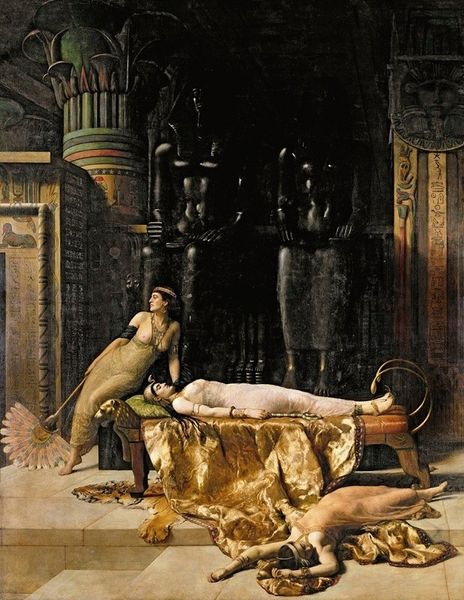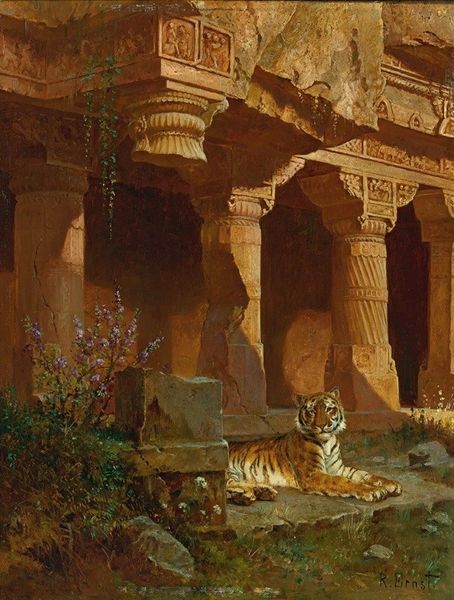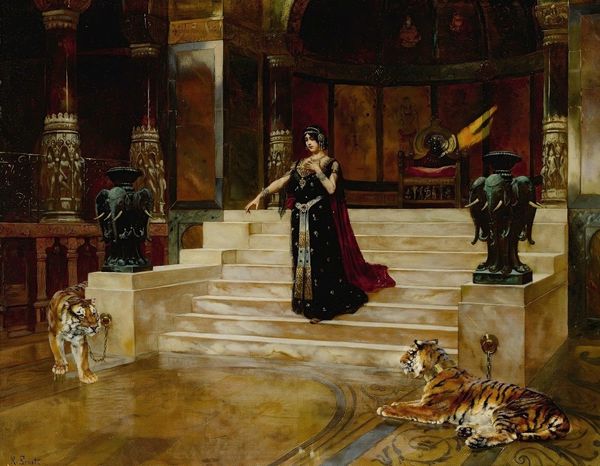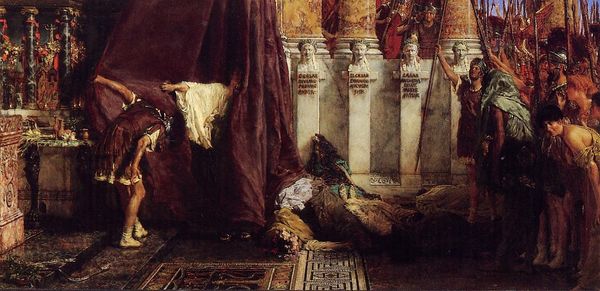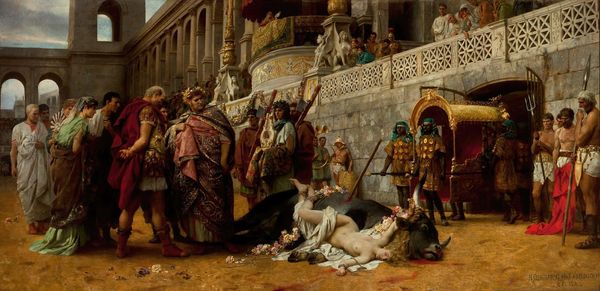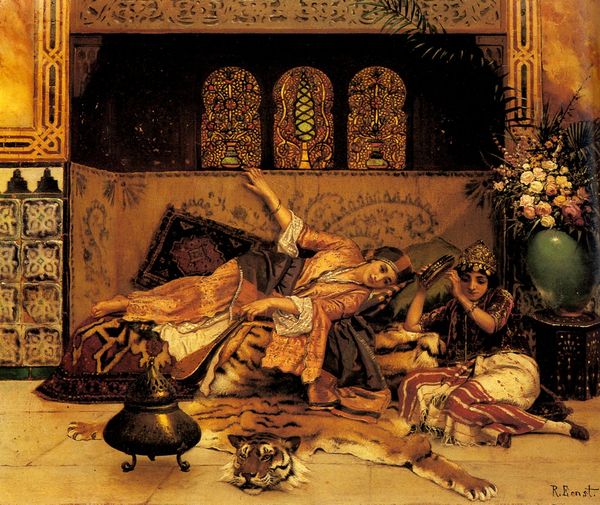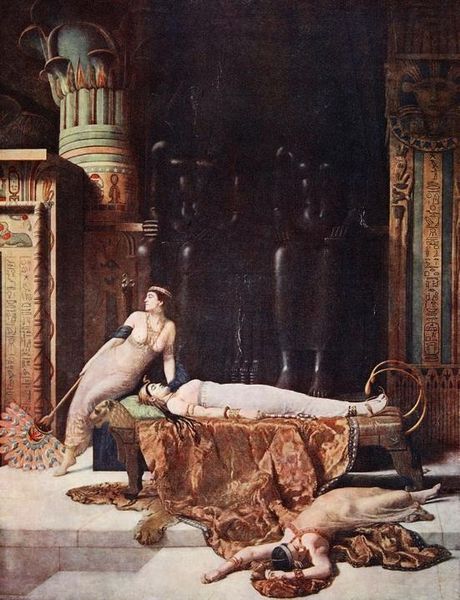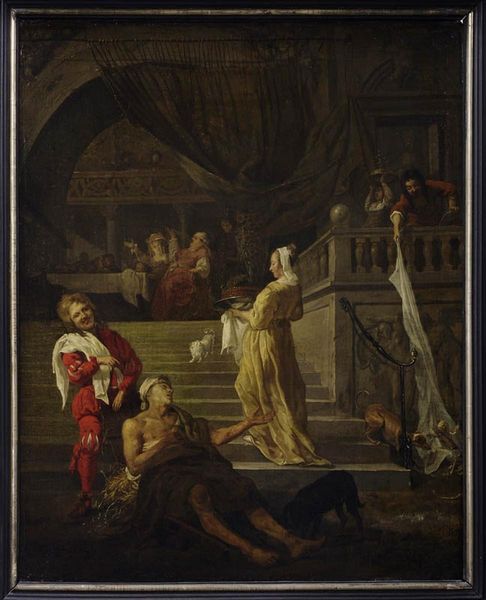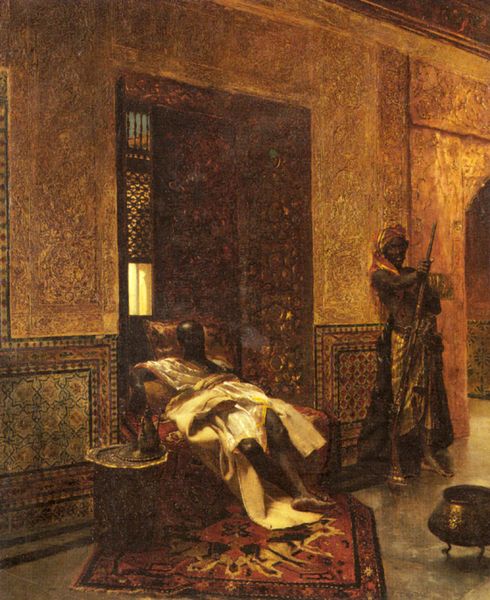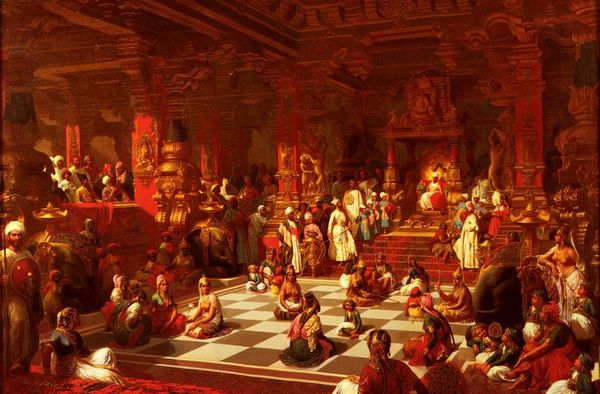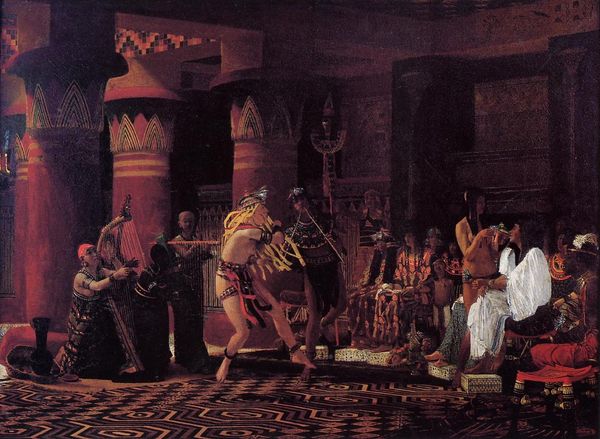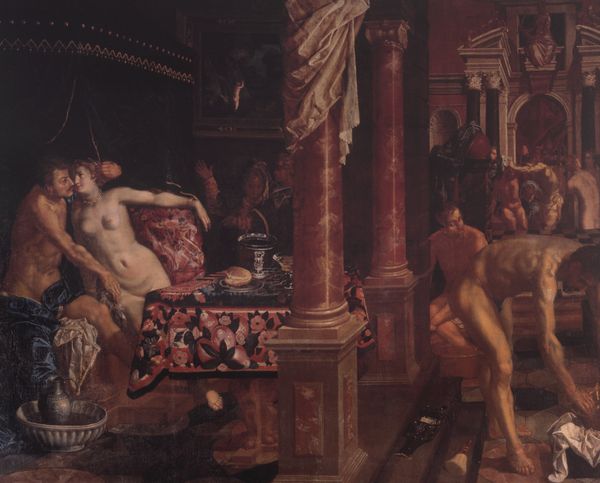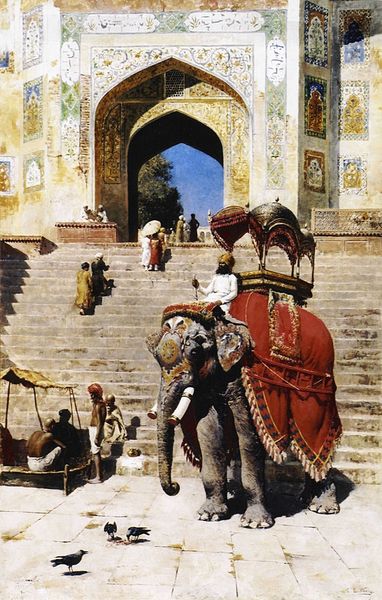
painting, oil-paint, impasto
#
figurative
#
painting
#
oil-paint
#
figuration
#
impasto
#
orientalism
#
painting painterly
#
islamic-art
#
genre-painting
#
history-painting
#
academic-art
#
realism
Copyright: Public Domain: Artvee
Curator: Immediately striking, isn't it? The scale is grand, but the subject, strangely intimate, almost dreamlike. A man, a tiger, bathed in this almost palpable stillness. Editor: Agreed. Looking closer, what grips me is the opulent artifice. The marble, the patterned rugs, even the tiger appears...arranged. The work by Rudolf Ernst certainly reflects an "Orientalist" perspective, placing a focus on elaborate interiors. The oil paint handling even mimics the polish and gleam of those surfaces. Curator: Polish indeed! Yet, to me, it feels more profound than mere staging. It feels like an exploration of inner peace through juxtaposition. Think of the raw power of that beast versus the serene posture of the figure... what does that conflict do for us, or the story being conveyed, materially or spiritually? Editor: Materially? Well, the tiger, real or represented, is a symbol loaded with colonial implications, isn't it? Hunting, trade, power. The very inclusion feels like a transaction. The man himself is adorned in very smooth, luminous clothing. He feels far more precious and staged in the piece. Curator: Perhaps... or maybe that contrast throws a light on how we "make" peace—internally or externally. He may just as likely be a guard, protector, perhaps a symbol that the internal "beast" or even our internal doubts must be reckoned with as part of finding harmony, eh? The pillars reaching beyond frame. They seem very carefully manufactured. They give off a manufactured religious ambience. Editor: Definitely the scene's construction adds layers of commentary. These carefully placed religious motifs of Buddhism clash with Islamic interior design details, forming a confusing amalgamation, don't you think? Like a commodification of cultural motifs. The materials on display highlight the power dynamics at play. Curator: But even a clash can create beauty, a friction from which something meaningful sparks! The artist maybe intended to stir discussion surrounding faith in all its many and contrasting forms! Maybe by pointing at all its commonalities rather than division, eh? A meeting place of power, divinity, man and nature, where those rigid pillars of faith provide more than just decoration. They may act more like witnesses. Ironic if religion takes on more of an observing, rather than doing, role. Editor: Fair enough. Perhaps it's less about the artist's intent and more about our modern engagement with these images and commodities. How much have things really shifted at all since "Orientalism" has given us space to criticize power relations so vividly rendered with this painting. The man praying or reflecting beside a caged or tranquilized tiger… I am certainly reflecting on how little has progressed between these groups and characters to this day. Curator: Hmmm...a good and worthy reflection on it's commodified history of religion and power. A worthwhile endeavor from canvas to contemplation. I find myself pondering whether this “Honoring the Tiger” implies submission, reverence, or possibly something altogether different – a pact of fragile coexistence we all enter daily with forces far more imposing than ourselves.
Comments
No comments
Be the first to comment and join the conversation on the ultimate creative platform.
